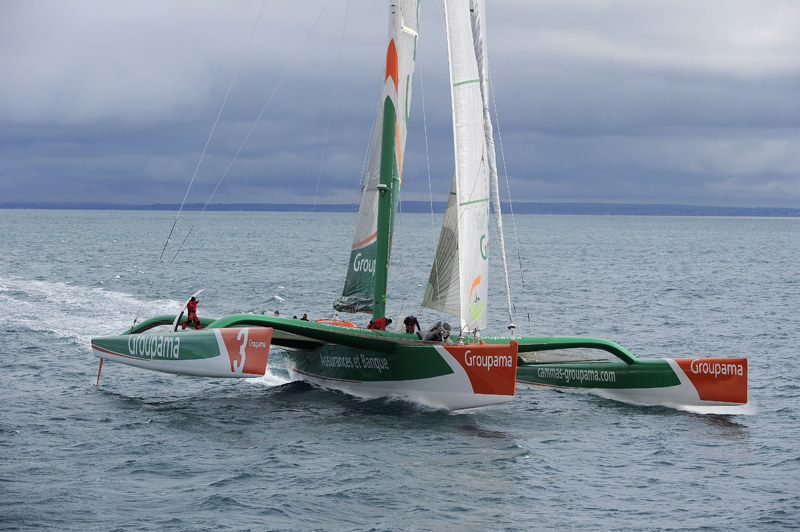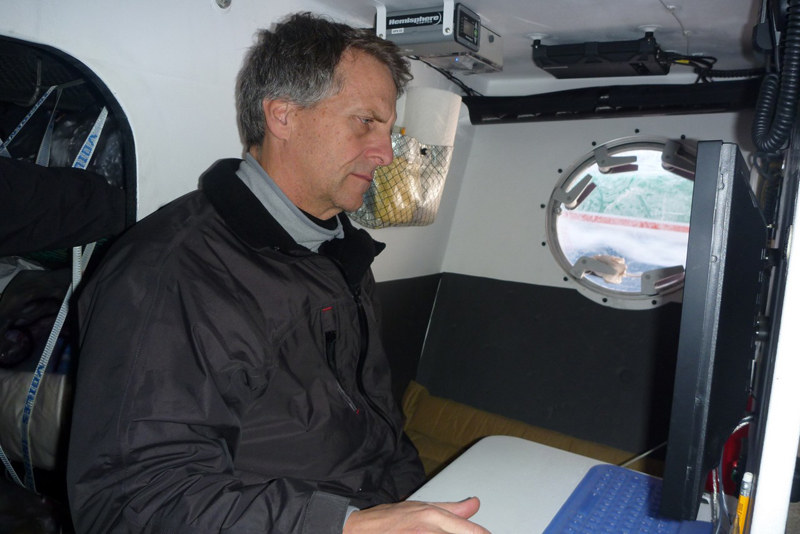
Groupama 3 Charges Ahead

Three days into a Jules Verne Trophy attempt, Franck Cammas’ 105-ft trimaran Groupama 3 has broken into the tradewinds and is eyeing a six-day passage to the equator. Aside from a collision with a sunfish this morning and a 50th birthday party for Lionel Lemonchois yesterday, the trip has been uneventful so far. Shaky weather at the start meant that after the first day, the 10-man crew was nearly 100 miles behind the reference time set by Bruno Peyron’s Orange 2 in 2005. But favorable conditions since have seen Groupama 3 turn that deficit into a 170-mile lead in the last two days while sailing a very direct route south.
"The departure window was very tricky on timing," said navigator Stan Honey in an email last night. "We had to wait at Ouessant [Ushant] for a small low to pass before starting, and then we were just able to get past Finisterre before a high moved too close to shore and slammed the gate. Then we passed just west of a cutoff low near Madeira that had been ruining many earlier possible departure times because it had been too far west. On this window however, the cut-off had moved east and we had great wind on the west side of it."

Honey said they were running in about 25-knots of breeze and "typical" seas around the low.
"In those conditions we use the leeward foil and obviously no daggerboard," Honey said. "We carry the smallest of our gennakers and one reef, and sail between 30 and 35 knots with a true wind angle between 145º and 150º."
That sounds like fun to us! Although the breeze has since dropped to the mid-teens and a bigger gennaker substitued for the smallest one, the team expects it to strengthen to the low-20s as they pass the Cape Verde Islands. After the doldrums the picture gets a little murkier.
"The approach to the Southern Ocean is still dicey," Honey wrote. "Some models show us having a fast trip along the SW side of the St. Helena High, and other models show us getting stuck behind a coll formed by a second high coming from South America and eventually merging with the St. Helena High."
This attempt should make for some great entertainment to come. In the meantime, make sure you have a look at our interview with Honey in the February issue of Latitude 38, where, among other things, he predicted the start day for the record attempt — a week in advance.
